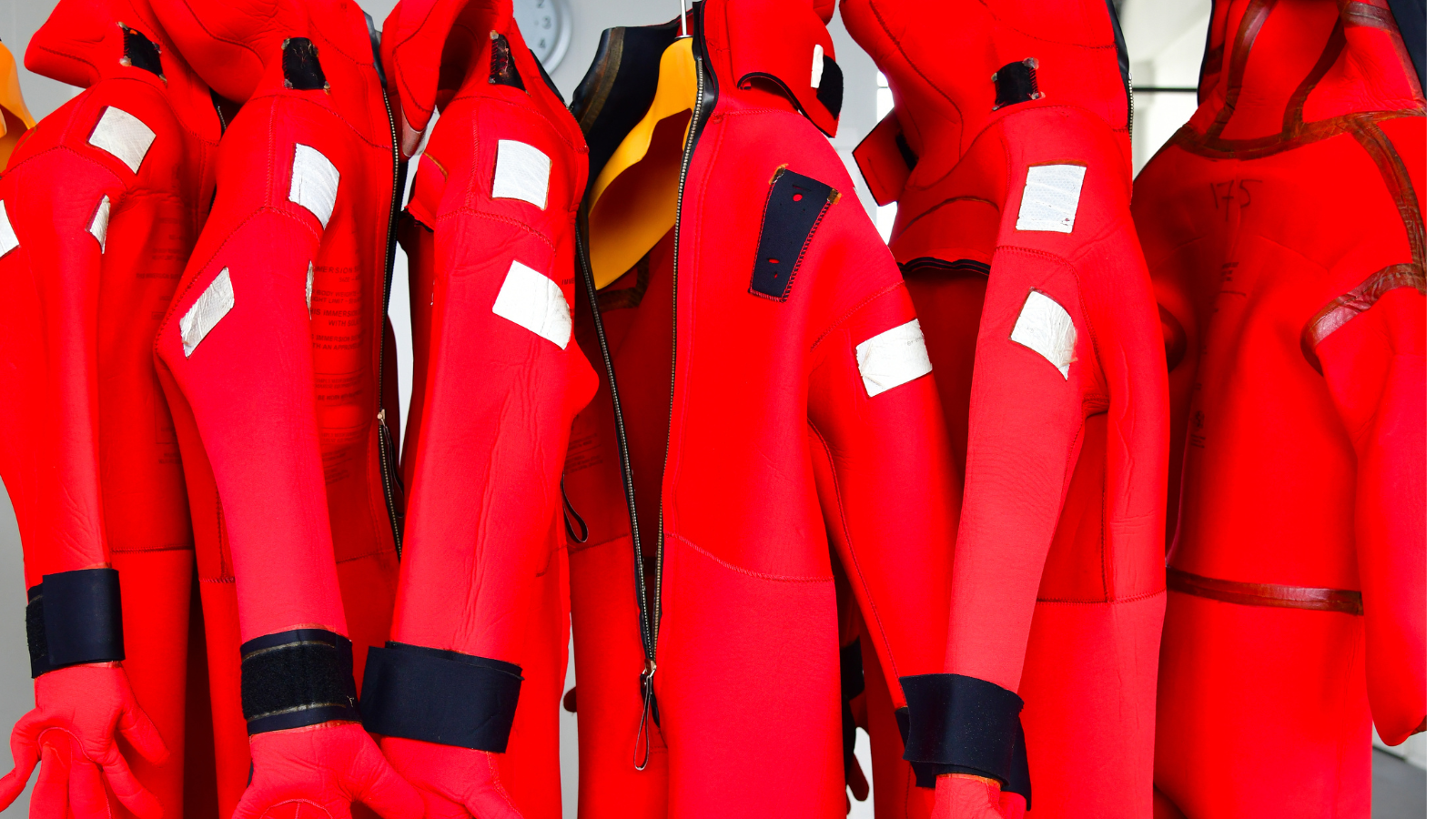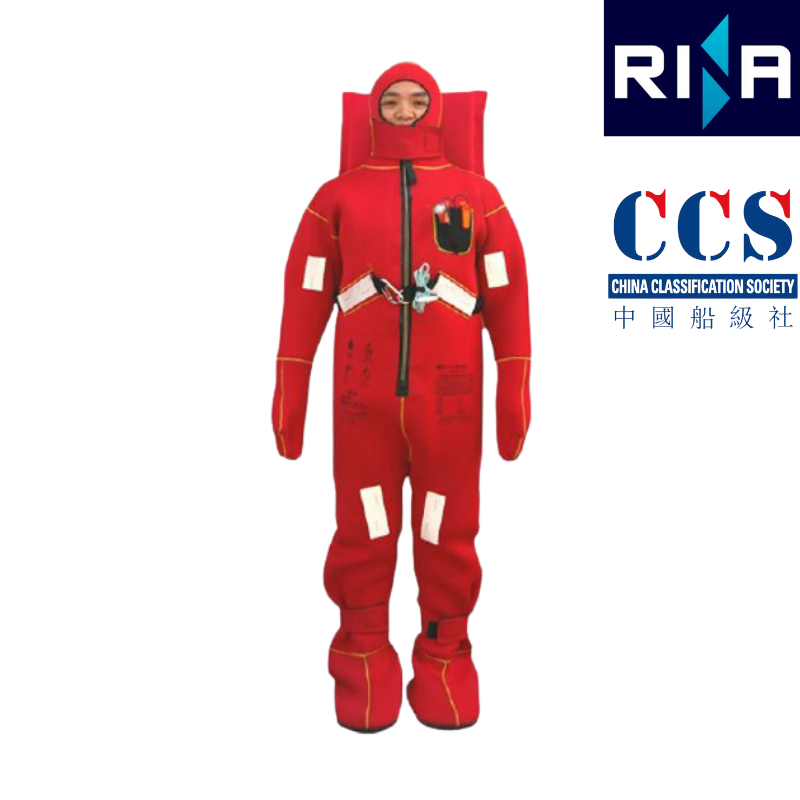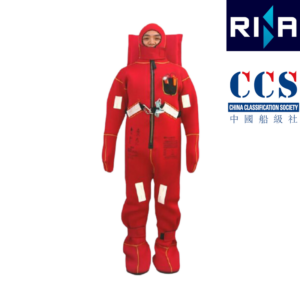Immersion Suits
View Edtech’s extensive range of Immersion Suits
An immersion suit, also known as a survival suit, is a waterproof and insulated garment designed to protect individuals from hypothermia in cold water. Commonly used in maritime industries, it fully encloses the body, providing thermal insulation and buoyancy. Bright colors and reflective strips enhance visibility, while watertight seals ensure minimal water exposure in emergencies.
Products
-

FANGZHAN NEOPRENE IMMERSION SUIT SOLAS EC APPROVED MODEL NUMBER:FZBW-II
Product successfully added to the Quote List
-

FANGZHAN IMMERSION SUIT TEST AND REPAIR KIT
Product successfully added to the Quote List
View Other Categories
What Is An Immersion Suit?



An immersion suit, often referred to as a survival suit or exposure suit, is a specially designed protective garment used in emergency situations where an individual is at risk of prolonged exposure to cold water. These suits are most commonly found in maritime industries, particularly on ships, oil rigs, and in the fishing industry, but are also essential equipment for offshore workers, emergency responders, and rescue personnel operating in cold climates. The primary function of an immersion suit is to protect the wearer from hypothermia by maintaining body heat and minimizing water exposure, which can be life-saving in cold water environments.
Immersion suits are typically made from waterproof and insulating materials, such as neoprene or specialized rubberized fabrics. These materials are chosen for their ability to create a tight seal around the body, preventing water from entering the suit, while also providing buoyancy and insulation. The exterior of the suit is usually reinforced to resist abrasion and punctures, ensuring durability even in rough seas or when worn in emergency situations.
A key feature of the immersion suit is its thermal insulation. Cold water can rapidly strip away body heat, leading to hypothermia in just minutes under certain conditions. The insulation of an immersion suit helps to trap the wearer’s body heat and maintain core temperature, significantly extending the time that a person can survive in cold waters. Some suits also contain additional internal insulation layers to further enhance this thermal protection.
The immersion suit is designed to fully enclose the body, leaving very little skin exposed to the cold. The suit covers the entire body, including the feet, hands, and head. Some suits come with attached gloves and boots, while others are designed to be worn over standard clothing. The hood is another crucial feature, as a significant amount of body heat can be lost through the head. The hood fits snugly over the head and face, leaving only a small area around the mouth exposed for breathing. In some models, the hood is integrated into the suit, creating a seamless barrier against cold air and water.
Zippers or fasteners on an immersion suit are carefully designed to be watertight, ensuring that no water can seep through the seams. Some suits use a combination of heavy-duty zippers and Velcro closures to ensure a secure and tight fit.
Another critical function of an immersion suit is to aid in buoyancy. The material used in these suits not only prevents water entry but also has buoyant properties, keeping the wearer afloat in the water. Many suits are equipped with additional buoyancy aids, such as foam padding or air bladders, which provide extra flotation to ensure that the wearer remains on the surface with minimal effort. This is especially important in emergency situations, as it reduces the physical strain on the wearer and increases the chances of rescue.
Visibility is a key factor during rescue operations, particularly in poor weather or low-light conditions. To improve the chances of being spotted by rescuers, immersion suits are often made in bright colors, such as orange or red, which stand out against the dark, murky waters or in overcast skies. In addition to the bright color, the suits are fitted with reflective tape and markings to enhance visibility under searchlights or during night rescues. Many suits also feature attachments for emergency lights or beacons, further increasing the wearer’s chances of being located quickly.
Modern immersion suits are often equipped with additional safety features that increase survival prospects. These may include:
- Whistles to attract attention.
- Rescue lights that can be manually activated or are water-activated.
- Emergency beacons or personal locator beacons (PLBs) that send out distress signals.
- Pockets for storing small emergency items, such as flares or radios.
Some advanced immersion suits are also designed to be fire-resistant or have anti-slip soles for safer movement on wet or icy surfaces.
Immersion suits are required to meet stringent international safety standards to ensure they provide the necessary protection in life-threatening situations. These suits undergo rigorous testing to ensure their thermal properties, buoyancy, and watertight integrity meet established maritime safety regulations, such as those set by the International Maritime Organization (IMO) and SOLAS (Safety of Life at Sea) conventions. Testing procedures typically include trials in extreme cold, water immersion tests, and inspections of seams, zippers, and buoyancy aids.



